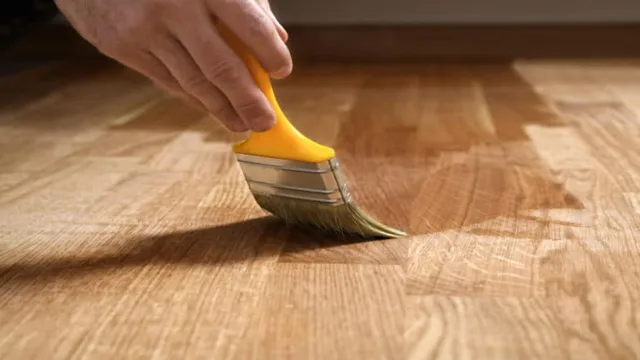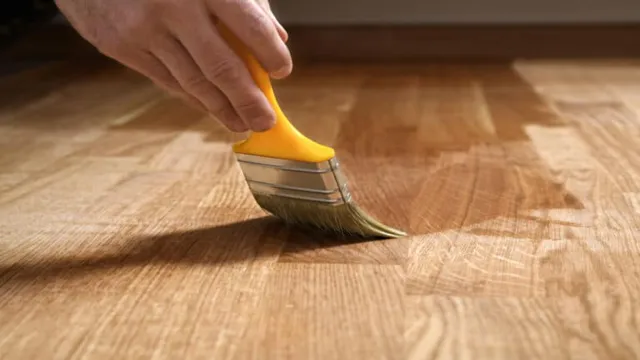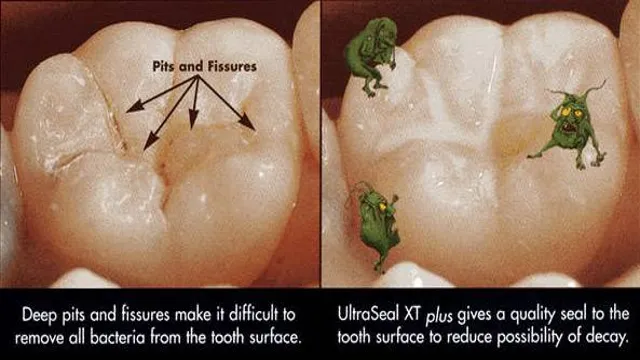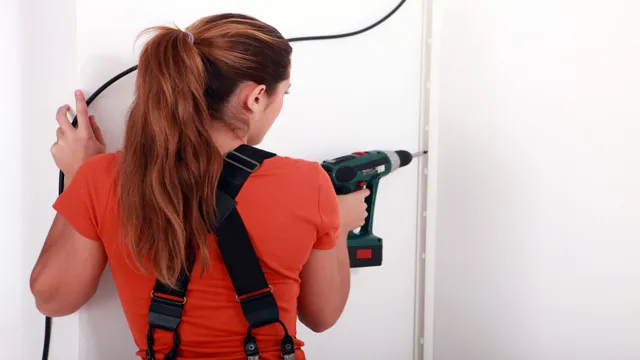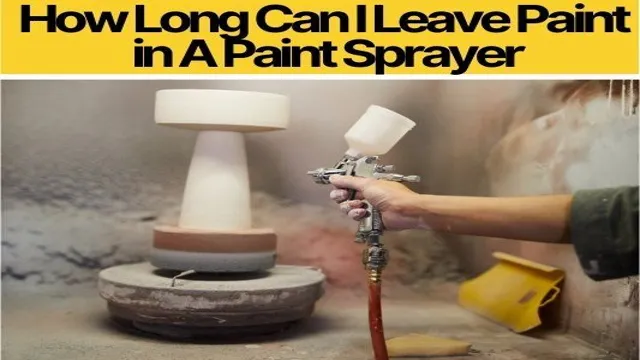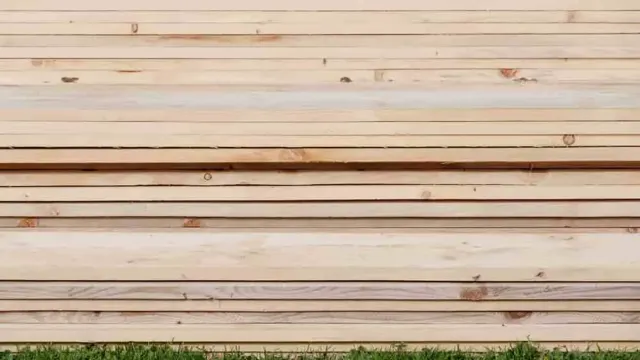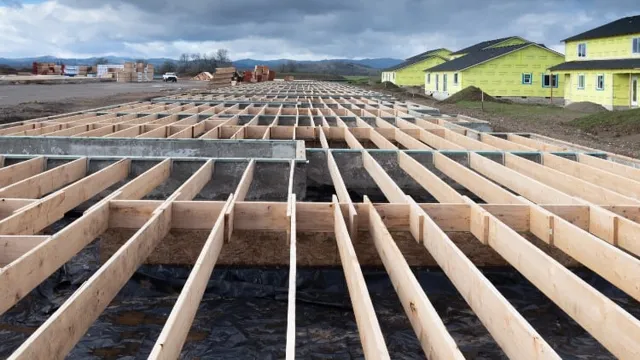How to Polyurethane Pictures on Wood: A Step-by-Step Guide for Picture Perfect Results
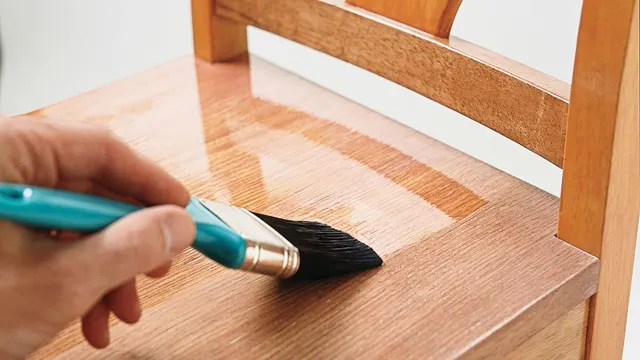
Are you looking for a way to preserve your favorite pictures onto a wooden surface? Look no further than polyurethane! Polyurethane is a clear protective coating that can give your wooden canvas a glossy, professional-looking finish while protecting it from damage. It’s a quick and easy process that anyone can do with just a few materials and some simple steps. In this blog post, we will cover everything you need to know about how to polyurethane pictures onto wood.
So, grab your favorite photos, some wood, and let’s get started!
Materials needed
Polyurethaning pictures on wood can give them a beautiful and professional finish. To do this, you will need a few materials, such as sandpaper, a clean cloth, polyurethane varnish, a paintbrush, and of course, the wood and picture that you want to apply it to. First, prepare the wood surface by sanding it lightly to remove any rough edges or bumps.
Then, wipe it clean with a dry cloth. Next, choose the right type of polyurethane varnish that suits your project. Apply the varnish evenly over the surface with a brush, being careful not to use too much.
Once dry, add a second and third layer of varnish if needed, making sure to let each layer completely dry before applying the next one. After the final layer, let the wood dry completely for about 24 hours. And now you have a beautifully polyurethaned picture on wood that will last for years to come!
Polyurethane
When it comes to using polyurethane, there are a few materials that you’ll need to prepare beforehand. First and foremost, you’ll need the actual polyurethane material itself, which typically comes in the form of a liquid. Additionally, you’ll need a mixing container to properly combine the polyurethane with any necessary catalysts or additives.
It’s also important to have protective equipment like gloves, goggles, and a mask to prevent any harmful exposure to the chemicals. Other necessary tools include a mixing stick, brush, roller, or sprayer depending on the application method that you prefer. Ensuring you have all the necessary materials on hand and following proper safety protocols will help make your polyurethane project a success.

Wooden board
If you’re considering building a wooden board, there are several materials that you’ll need to make sure you have before you get started. Of course, the primary material you’ll need is wood itself. Depending on the size of the board you’re building, you may need one or multiple pieces of lumber.
It’s important to choose a high-quality wood that is straight, without knots or cracks, and will be durable enough to withstand the intended use. Other materials you may need include screws or nails to hold the board together, a saw to cut the wood down to size, sandpaper to smooth edges and surfaces, and wood glue to reinforce joints. Additional tools like a drill or hammer may also come in handy throughout the building process.
With the right materials and a bit of patience, you’ll be on your way to crafting a beautiful, functional wooden board that can be used for a variety of purposes.
Pictures
When it comes to capturing the perfect picture, having the right materials can make all the difference. Along with a camera or smartphone, there are a few other tools I always make sure to have on hand. First, a tripod is a must-have for keeping shots steady and avoiding shaky or blurry images.
I also like to carry a remote shutter release for taking photos without having to touch the camera, reducing any accidental movement. Neutral density filters are great for adjusting the exposure and creating stunning effects, especially in bright sunlight. Lastly, a good lens cleaning kit is essential for removing smudges and dust that can ruin an otherwise perfect shot.
By having these materials at the ready, I can focus on capturing the moment and creating beautiful images that will last a lifetime.
Paintbrush or foam brush
Paintbrush or Foam Brush: A Guide to Choosing the Right Tool for Painting Projects When it comes to applying paint, choosing the right brush can make all the difference in achieving a smooth, even finish. The two most common types of brushes are paintbrushes and foam brushes. Paintbrushes have bristles made from natural or synthetic materials, while foam brushes have a foam head.
Which brush you use will depend on the type of paint you are using, as well as the surface you are painting. For water-based paints, foam brushes tend to work better because they don’t absorb the paint like traditional brushes do, resulting in less dripping and mess. They are also great for flat surfaces, as they don’t leave visible brushstrokes.
However, if you’re painting a smaller area or need more precision, a paintbrush may be a better choice. For oil-based paints, a natural bristle paintbrush is the best option, as the solvents in oil-based paint can actually dissolve foam brushes. Synthetic-bristle paintbrushes can also be used, but they may not hold up as well over time.
Oil-based paints tend to be thicker and heavier, so a stiffer brush is needed to apply them effectively. In general, it’s a good idea to have a variety of brushes on hand for different painting projects. Investing in high-quality brushes can also make a big difference in the final outcome of your painting.
So, whether you’re starting a new DIY project or planning to touch up some areas in your home, be sure to choose the right brush for the job for optimal results.
Sandpaper
When it comes to sandpaper, there are a few materials you’ll need to have on hand to get the job done right. Of course, the first thing you’ll need is sandpaper itself. Sandpaper comes in a range of grits, from coarse to fine, so be sure to choose the right grit for your project.
In addition to sandpaper, you’ll need a sanding block to hold the sandpaper in place and to provide a smooth, flat surface to work on. A sanding block is typically made from wood or plastic and can be purchased at most hardware stores. You may also want to invest in a dust mask to protect your lungs from any dust created during the sanding process.
Finally, it’s a good idea to have a clean, dry cloth on hand to wipe away any dust or debris left behind by the sandpaper. With these materials at the ready, you’ll be able to tackle any sanding project with confidence and ease.
Preparing the Wood
Before applying polyurethane to pictures on wood, proper preparation of the wood is necessary to ensure successful application and longevity. Begin by inspecting the surface of the wood for any imperfections, such as scratches or dents, that may affect the quality of the final product. Sand the surface of the wood with a fine-grit sandpaper until it feels smooth to the touch.
Remove all dust and debris by wiping the surface with a tack cloth or damp rag. Next, apply a pre-stain wood conditioner to even out any inconsistencies in the color of the wood. Allow the conditioner to dry completely before applying any stains or finishes.
By properly preparing the wood, the polyurethane will adhere properly, and the final product will be smooth and aesthetically pleasing.
Clean the surface of the wooden board
If you’re getting ready to work with wood, the first thing to do is to clean the surface of the wooden board. Whether you’re planning on sanding, painting, or staining the wood, you want to start with a clean surface. This means removing any dirt, dust, or debris that may have accumulated on the wood.
To do this, you can use a soft-bristled brush to gently sweep off any loose particles. Then, take a cloth and dampen it slightly with water or a cleaning solution. Wipe down the wooden board, making sure to get into any nooks or crannies.
Don’t forget to dry the wood afterwards to prevent any moisture from seeping in. This step will help ensure that you have a smooth and even surface to work with.
Sand the board smoothly
When it comes to preparing the wood for a woodworking project, the first step is to sand the board smoothly. Sanding helps in achieving a polished and perfect finish on your project. The best way to go about this is to use medium-grit sandpaper and sand first, with the grain of the wood.
You need to use a sanding block to ensure that the pressure is distributed evenly while sanding. Once you have sanded with medium-grit sandpaper, switch to fine-grit sandpaper and sand with the grain of the wood again. This will help remove any scratches left behind by the medium-grit sandpaper.
Before proceeding to the finer-grit sandpaper, make sure that the board is completely smooth to the touch. You can also check to see if any rough spots are left by running your hand over the board. Once you are done with this step, you can proceed to the next step of measuring and cutting the wood as per your project requirements.
By sanding the board smoothly, you are ensuring that your finished project looks neat, polished, and ready to use.
Wipe the board clean
To achieve a perfectly smooth finish, it’s crucial to prepare the wood before applying any stain or paint. The first step is to wipe the board clean with a damp cloth, removing any dirt or debris. Once the board is clean, you can then sand it down to create a smooth surface.
Sanding helps to remove any rough spots, grooves or scratches. Use a fine-grit sandpaper to avoid scratching the wood and work in the direction of the grain. After sanding, wipe it down once again with a damp cloth to remove any sawdust.
This will help to ensure that the stain or paint adheres properly to the wood. By taking these simple but critical steps, you can prepare your wood to achieve a professional-looking finish that will last for years to come.
Preparing the Pictures
If you’re looking to polyurethane pictures onto wood, there are a few steps you need to take to ensure that the end result looks great. The first step is to choose the right kind of wood. Typically, you’ll want to use a smooth and even piece of wood that has been sanded and cleaned.
Once you’ve chosen your wood, it’s time to prepare the pictures. This involves printing your pictures onto photo paper or canvas, and then trimming them as needed. Next, you’ll want to adhere the pictures to the wood using a strong adhesive, such as Mod Podge.
Make sure that there are no air bubbles or wrinkles in the pictures. Finally, it’s time to apply the polyurethane. Apply a thin coat using a brush, and allow it to dry completely before applying additional coats.
Polyurethane will protect your pictures from moisture and damage, while also giving them a glossy finish that looks fantastic. Overall, with a little bit of patience and attention to detail, polyurethaning pictures onto wood can be a fun and rewarding DIY project.
Trim and cut the pictures
When it comes to preparing pictures for your blog, trimming and cutting them is an essential step to ensure they look their best. Not only can this help with the overall quality of the image, but it can also help to focus on specific areas of the picture. Using photo editing software like Adobe Photoshop or Canva, you can trim and cut your pictures to the desired size and aspect ratio.
This is especially important if you plan on making a featured image for your blog. It’s also a good idea to consider the context of the picture and whether or not it enhances the content of your blog. By taking the time to prepare your pictures, you’ll be able to create a visually appealing blog that is both engaging and informative for your readers.
Apply a thin layer of adhesive on the back of the pictures
If you’re looking to create a collage of pictures but are worried about them falling off or shifting around, applying a thin layer of adhesive to the back of each picture is crucial. This will ensure that each picture stays in place, creating a cohesive and sturdy collage. Before applying the adhesive, make sure that the back of each picture is clean and free of any dirt or debris.
You can use a soft cloth or tissue to gently wipe the back of each picture. Once each picture is clean, use a small brush or roller to apply a thin layer of adhesive to the back. Don’t apply too much, otherwise, it may cause the pictures to wrinkle or become distorted.
Instead, a thin and even layer is all that’s needed to ensure the pictures stick together. By taking the time to prepare your pictures before creating your collage, you can ensure a professional-looking end product that will last for years to come.
Press pictures onto the wooden board
When it comes to press pictures onto a wooden board, the first step is to prepare the pictures. Start by selecting the photos you want to use and ensure that they are printed on high-quality paper. It’s important to trim the pictures to the correct size and shape and remove any excess paper.
This will help prevent bubbles from forming during the transfer process. Next, apply a thin layer of glue to the wooden board and carefully place the picture on top. Use a roller or credit card to smooth out any wrinkles or bubbles.
Wait for the glue to dry completely before moving on to the next step. By properly preparing the pictures, you’ll ensure a smooth and even transfer onto the wooden board, resulting in a stunning and unique piece of art that will be cherished for years to come.
Applying Polyurethane
If you have wooden pictures that you want to preserve, applying polyurethane can help protect them from damage and deterioration. The process may seem daunting at first, but with the right tools and techniques, it can be accomplished with ease. To begin, clean the wooden surface thoroughly and sand it down to create a smooth, even finish.
Choose a polyurethane that is appropriate for the type of wood you’re working with and apply it evenly using a brush or rag. Let it dry completely and then sand it lightly to smooth out any imperfections. Repeat this process at least two or three times until the surface is fully sealed and protected.
With a little patience and care, your wooden pictures will be able to withstand the test of time.
Stir the polyurethane
When it comes to applying polyurethane, one important step is to stir the product thoroughly before use. This helps to ensure an even finish and consistent color throughout the project. When left sitting, polyurethane can settle and separate, which can result in uneven application and a blotchy finish.
To prevent this, use a stirring stick to gently mix the polyurethane for a few minutes before use. Make sure to scrape the bottom and sides of the container to ensure all settled product is incorporated. By taking this simple step, you can achieve a beautiful and professional-looking polyurethane finish on your project.
Apply the polyurethane in long, even strokes.
Applying Polyurethane When it comes to applying polyurethane, taking your time and using long, even strokes is crucial. This will ensure a smooth and even finish, free from imperfections. Start by preparing your surface properly, making sure it’s clean and free from debris.
Then, using a high-quality brush or applicator pad, apply the polyurethane in the direction of the grain, being careful not to apply too much pressure. It’s important to work in small sections, so as not to let the polyurethane dry before you have a chance to smooth it out. Once you’ve applied the polyurethane to your desired thickness, leave it to dry completely before adding another coat.
Remember, the key to a successful polyurethane finish is taking your time, applying it evenly, and allowing it to dry properly between coats. With these tips in mind, you’ll be able to achieve a durable and beautiful finish for your woodworking projects.
Allow the polyurethane to dry completely.
When it comes to giving your wooden surfaces a finished look, applying polyurethane is a great option. However, before you start applying the polyurethane, it’s essential to make sure that the surface is clean and free of any old finishes. Once you’ve prepared the surface, it’s time to apply the polyurethane.
Using a brush or roller, start applying the polyurethane in a thin, even layer, working in the direction of the wood grain. Make sure to go over any bubbles or drips as you go. Once you’ve applied the polyurethane, it’s important to allow it to dry completely.
This can take anywhere from a few hours to overnight, depending on the temperature and humidity of your space. So, be patient and let the polyurethane dry completely before touching or using the surface. With a little patience and attention to detail, your wooden surfaces will have a beautiful, long-lasting finish.
Finishing and Upkeep
If you’ve got pictures on wood and want to make sure they stand the test of time, polyurethane is a great option. Polyurethane is a durable, protective finish that can help prevent fading, scratches, and other damage to your pictures. Before you begin, make sure the pictures are completely dry and clean.
Then lightly sand the wood with a fine-grit sandpaper to give the polyurethane something to grip onto. Once you’re ready to apply the polyurethane, use a clean brush to apply a thin layer. Be sure to follow the manufacturer’s instructions for drying time and number of coats.
After you’re done applying, let the polyurethane dry completely before touching or moving the pictures. To keep your pictures looking great, it’s important to regularly clean and maintain them. Use a soft, dry cloth to gently wipe away dust and dirt, and avoid using harsh chemicals that could damage the wood or polyurethane.
With proper care, your pictures will look their best for years to come.
Lightly sand the surface after each coat
When it comes to finishing and upkeep for wooden surfaces, sanding is an essential step for achieving a smooth and even finish. Lightly sanding the surface after each coat will remove any rough spots or bumps that may have appeared during the drying process and help the next coat of finish adhere better. Sanding also gives the surface a finer texture, making it feel smoother and more appealing to the touch.
It’s important to use a fine-grit sandpaper to avoid scratching the surface of the wood. Regular sanding can also help prolong the life of the finish by preventing it from wearing away too quickly. So, if you want to keep your wooden surfaces looking their best, make sure to schedule some time for regular sanding.
Apply clear wax for shine and protection
One of the most important steps in ensuring the longevity and beauty of your painted furniture is to apply a clear wax for shine and protection. Not only will it give your piece a smooth, satin finish, but it will also protect it from daily wear and tear. Using a soft cloth, apply the wax in a circular motion, making sure to cover all surfaces.
Allow it to dry for a few hours before buffing it with a clean cloth to reveal a gorgeous shine. This will not only help to protect your furniture from scratches and stains, but it will also prevent fading and discoloration from sunlight exposure. Remember, proper finishing and upkeep are essential to keeping your painted furniture looking its best for years to come.
Reapply polyurethane every couple of years
Polyurethane Polyurethane is a popular finish used on floors, furniture, and other wooden surfaces. It is known for its durability and resistance to scratches, stains, and damage. However, like any other finish, polyurethane requires maintenance and upkeep.
Experts recommend reapplying polyurethane every couple of years to keep the surface looking fresh and protected. Reapplication involves sanding down the original finish and applying a new coat of polyurethane. This process helps restore the protective layer and adds a new layer of gloss to the surface.
Neglecting to maintain polyurethane can lead to discoloration, wear, and tear over time. Therefore, it is crucial to keep an eye on the surfaces coated with polyurethane and reapply as needed. Additionally, avoiding harsh chemicals and using mild cleaners can prolong the life of the finish, keeping it looking new for longer.
In summary, reapplying polyurethane every couple of years is a simple, yet necessary, step in maintaining the beauty and protection of wooden surfaces.
Conclusion
If you want to give your wooden pictures a lasting shine and protection, polyurethane is the way to go! Just remember to properly prepare your surface, apply multiple thin coats, and sand between each coat for a smooth finish. With a little patience and attention to detail, your pictures will be picture-perfect for years to come. And who knows, maybe one day they’ll even be the star piece in an art exhibit.
At the very least, they’ll make a great addition to your home decor!”
FAQs
What is polyurethane and why is it used for wood pictures?
Polyurethane is a type of varnish that provides a protective layer to wood surfaces. It is used for wood pictures to prevent damage or discoloration due to exposure to light, moisture, or other environmental factors.
How should I prepare the wood surface before applying polyurethane?
The wood surface should be sanded smooth and free of any dust or debris. It is recommended to clean the surface using a damp cloth and let it dry completely before applying polyurethane.
What is the best type of brush to use when applying polyurethane?
A brush with synthetic bristles or foam brushes are recommended for applying polyurethane on wood pictures. Avoid using natural bristle brushes as they can leave bristles on the surface.
Can I apply polyurethane with a spray bottle instead of a brush?
Yes, you can use a spray bottle to apply polyurethane on wood pictures. However, it is recommended to use a fine-mist sprayer and apply multiple thin coats instead of one thick coat.
How long do I need to wait between applying coats of polyurethane?
It is recommended to wait for 24 hours between each coat of polyurethane. This will ensure that the previous coat is fully dried and cured before applying the next coat.
Can I apply polyurethane on top of an already existing finish on the wood picture?
Yes, you can apply polyurethane on top of an existing finish on the wood picture. However, it is recommended to sand the surface lightly before applying polyurethane to ensure proper adhesion.
How many coats of polyurethane do I need to apply to the wood picture?
It is recommended to apply at least two to three coats of polyurethane on the wood picture. However, you can apply more coats if you want a thicker and more durable protective layer.

